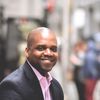I have been working in education for over 20 years, first as a classroom teacher, then various roles as executive director, chief program officer and consultant in the social sector. Now, I have the privilege of training the next wave of educational leaders at the Steinhardt School of Culture, Education and Human Development at New York University, an institution with global reach.
Over the years, I have increasingly been disappointed, no, depressed by the state of public education for poor and working class young people in this country and abroad. I marvel at the educational fads that are introduced and experimented with (remember the laptops in schools plan?) to only be abandoned because of lack of funding or lack of will or a changing of the guard in administrations. Every minute, it seems, some initiative is highlighted in the media, with smiling (usually poor) kids as confirmation that it's a sound approach, soon to fall off the radar when the cameras disappear, along with funding. And schools remain the same -- outdated and disconnected from 21st century demands.
I believe what will transform schools are not gimmicks or fads, but leaders in schools, from public and private sectors and from communities, who are tri-sector athletes in education. What is a tri-sector athlete in education, you ask? A tri-sector athlete in education is a person, whether principal or executive director of a non-profit or corporate leader or community member, who has the ability to leverage partnerships among schools, businesses and government, to name a few varied stakeholders, by finding a common interest or goal to make sustained change, for the long term.
Laurene Powell Jobs (widow of Steve Jobs) has launched an ambitious $50 million national crowd-sourcing campaign, XQ: The Super School Project to transform the public high school. Through this project, it calls on tri-sector athletes in education to submit proposals to the XQ Institute that Powell-Jobs chairs, and compete to get support for their "out of the box" school ideas. It could be a school that enables students to innovate as a technology start-up and do apprenticeships with companies as part of their diploma requirements or one that uses enhanced learning technologies so students can take college level courses while they work. All ideas welcomed.
Now, the idea of wealthy philanthropists wading into the education waters is not new. Bill and Melinda Gates were a financial force behind small schools and Eli and Edythe Broad have invested millions toward educational leadership and educational technology. Yet, XQ: The Super School Project pushes the envelope, drawing ideas from a variety of leaders across sectors to reimagine (not reproduce) learning environments.
Further, Powell Jobs' Emerson Collective, a social justice focused non-profit organization behind XQ: The Super School Project, has a multi-pronged approach to tackle educational inequality, immigration reform and other social issues that impede the life chances of young people and communities. This is a promising step in the right direction, but still too early to celebrate.
An example of a transformative, tri-sector school model is Pathways in Technology Early College High School (P-Tech) in Brooklyn, New York. Founder and Principal, Rashid Davis, through partnerships with the New York City Department of Education, IBM and City University of New York (CUNY), developed one of the most effective high school programs in the country, where young people can not only get a diploma and an associates degree, but an internship and job placement in high demand STEM fields.
P-Tech does not use a restrictive entrance exam, which tends to reproduce inequality in our school systems, and students generally come from local public middle schools. It also pushes the notion that students at all achievement levels have the ability to innovate, to choose college, to contribute to civic life and to find challenging careers.
Principal Davis and the community of leaders in this partnership expanded on an innovative way to wed "credentials with a career pathway" for young people in Brooklyn. New York State is slated to triple the number of P-Techs by 2016, over 30 P-Tech models are growing across the country, and Australia just launched its own version. This seems to be moving from a school model to a school movement that blends technical training, higher education and workforce.
Recently, President Obama praised P-Tech at a recent convening of business leaders. Obama is a fan of P-Tech because it promotes his idea of a free community college education, and is a response to the demand for tech skills in the workforce.
Another example of tri-sector athleticism in education is Maritza Arroyo, Executive Director of Zone 126 in Astoria Queens. Zone 126 ("Zone 126" takes the last number from each of the zip codes that comprise the Astoria, Queens/Long Island City, Brooklyn neighborhoods and the zone where their programs are located) drives efforts to link individuals and organizations to support young people in Astoria from cradle to college to career.
Kids in Zone 126 have access to summer and after-school programs, referrals to social and family services and corporate partners who support career exploration and access. Similar to Geoffrey Canada's well-known model, Harlem Children's Zone, Zone 126 is a Promise Neighborhood, a program championed by President Obama to saturate communities with services to support young people and families.
Rashid Davis and Maritza Arroyo are just two examples of tri-sector athletes in education. There are many more unrecognized, and more to be trained and supported. Tri-sector athletes in education work to be multi-lingual, understanding the language and value proposition of stakeholders, push companies to have double "bottom lines", both profit and social progress, while holding them accountable, and are bridge builders to find real solutions in schools and communities. What we need are more courageous people willing to put themselves on the line, willing to push this democratic experiment to its limits and render the 19th century school model obsolete.
